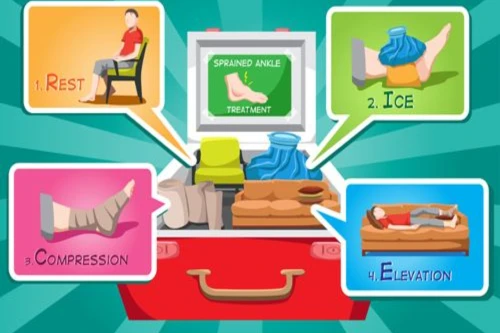Soft Tissue Injuries


A soft tissue injury is when a muscle, tendon, or ligament experiences trauma, such as overstretching or tearing, which causes pain, swelling, and other symptoms.
Soft tissue injuries are common injuries that can happen to anyone. The most common causes of soft tissue injuries are trauma, such as an accident or impact to the body, overuse, and poor body mechanics.
They are two main forms of soft tissue injuries: sprains and strains. Both forms of soft tissue injuries occur when body tissue is overstretched or torn. The difference between the two is that a sprain is the damage of a ligament, while a strain is the damage of a muscle or tendon. In addition to these, bruising and overuse injuries can also be classified as soft tissue injuries.
Each form of soft tissue injury displays different signs and symptoms.
Sprains are the overstretching of a ligament, which is a fibrous band that holds bones together. Sprains can be identified if any of the following symptoms are present:
Strains are the overstretching of muscles or tendons, which are fibrous bands that hold muscle to bone. Strains can be identified by the following symptoms:
Bruises occur when there is bleeding into the soft tissue due to direct force to the body. They can be identified by the following signs:
Overuse injuries develop over time and occur due to movements that cause repetitive twisting or compression on muscles and tendons. The signs of an overuse injury are:

Having a previous sprain or strain is one of the leading factors that increase your risk of getting a soft tissue injury. For this reason, it is important to perform preventative methods to avoid an initial injury from occurring.
Prior to participating in sports and exercises that put you at risk of injury, you should engage in appropriate training to prepare for the task. This should include strengthening and stretching exercises to ensure your body is prepared.
When exercising, ensure you are properly warming up and stretching prior to starting, as well as cooling down when finishing. Appropriate, well-fitting footwear and relevant safety equipment, such as shin guards and helmets, should always be worn to help prevent injury.
Most importantly, you should avoid performing any activities or movements that cause pain, as this can quickly result in a soft tissue injury.
More information about how to prevent soft tissue injuries can be found on the Sports Medicine Australia website.

If you do experience a soft tissue injury, it is important to treat the symptoms as soon as possible to reduce bleeding and damage within the injured part. The best immediate treatment is to use the RICER protocol:
Within the first 48 – 72 hours of receiving a soft tissue injury, it is also essential to apply the ‘Avoid HARM’ protocol, where you need to avoid the following:
Pain relief, such as Paracetamol or Ibuprofen, can be used to keep you comfortable, assist with healing, and help you move around after the initial injury.
If the pain and symptoms worsen despite the RICER and HARM treatment, or there is a significant impact on your movement, you will need to see a health professional for appropriate testing and treatment.
You can expect a full recovery from most soft tissue injuries in between 1 – 6 weeks. However, this length of time depends on the severity of the injury, as well as other individual factors like your age and general health status.
Soft tissue injuries are a common injury for many people who play sports. It is important to identify the symptoms of sprain, strain, and other forms of soft tissue injury to ensure that the appropriate treatment can be applied as soon as possible.
By doing so, you can manage pain, reduce further damage, and support a quick recovery to get you back to pain-free movement.
The RICER treatment is best for mild or moderate injuries, such as sprains, strains, and bruises.
If there is still no improvement after the application of the RICER method, seek immediate medical care. Call emergency help if the injured part becomes numb or suffers deformity.
Learn first aid to know more about different techniques in wound and injury management.

March 6, 2025
Falls are one of the most common causes of injury, particularly among children and older adults. Whether it’s a simple trip or a serious fall from height, knowing how to administer first aid can prevent further injury and, in some cases, save a life.

October 1, 2024
The musculoskeletal system is the foundation of human movement, support, and protection, playing a critical role in our ability to perform everyday tasks. Understanding the components and functions of the musculoskeletal system is essential for preventing injuries and managing conditions that may arise, particularly in workplaces where manual handling tasks are common.

August 28, 2024
A jaw fracture is a break or crack in the jawbone. This type of injury can occur due to various reasons and may result in considerable pain and difficulty in performing everyday activities like eating and speaking.